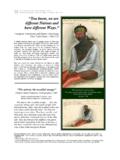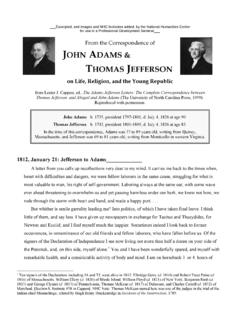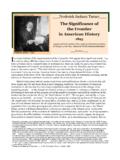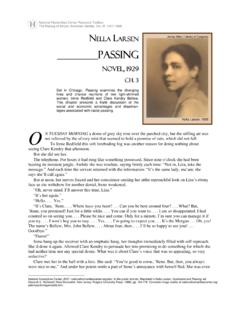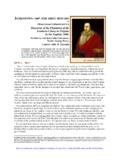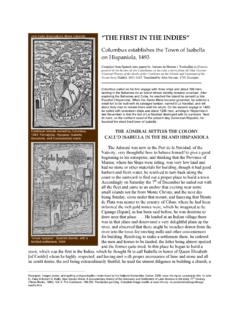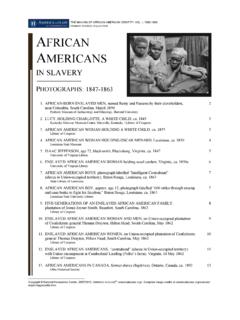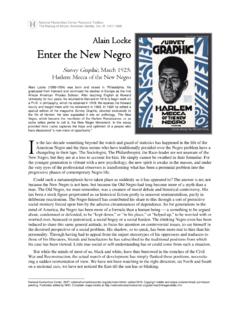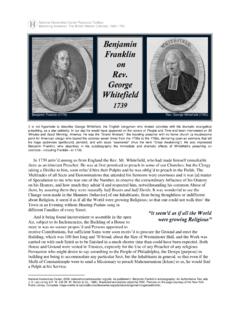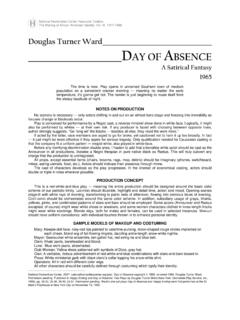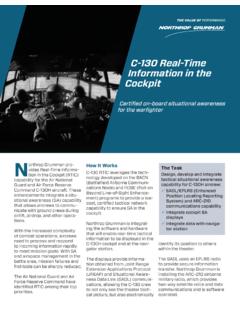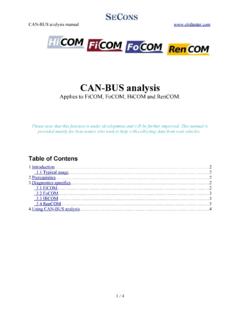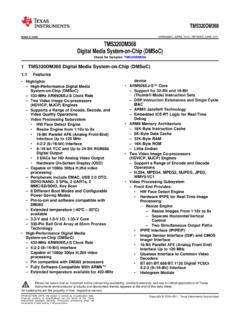Transcription of M The ONTGOMERY BUS BOYCOTT WOMEN WHO …
1 National Humanities Center Resource Toolbox The Making of African American Identity: Vol. III, 1917-1968. The MONTGOMERY. Black Belt Press BUS BOYCOTT . and the WOMEN WHO STARTED IT _____. The Memoir of Jo Ann Gibson Robinson _____. Mrs. Jo Ann Gibson Robinson Black WOMEN in Montgomery, Alabama, unlocked a remarkable spirit in their city in late 1955. Sick of segregated public transportation, these WOMEN decided to wield their financial power against the city bus system and, led by Jo Ann Gibson Robinson (1912-1992), convinced Montgomery's African Americans to stop using public transportation.
2 Robinson was born in Georgia and attended the segregated schools of Macon. After graduating from Fort Valley State College, she taught school in Macon and eventually went on to earn an in English at Atlanta University. In 1949 she took a faculty position at Alabama State College in Mont- gomery. There she joined the WOMEN 's Political Council. When a Montgomery bus driver insulted her, she vowed to end racial seating on the city's buses. Using her position as president of the Council, she mounted a BOYCOTT . She remained active in the civil rights movement in Montgomery until she left that city in 1960.
3 Her story illustrates how the desire on *. the part of individuals to resist oppression once it is organized, led, and aimed at a specific goal can be transformed into a mass movement. Mrs. T. M. Glass Ch. 2: The BOYCOTT Begins O n Friday morning, December 2, 1955, a goodly number of Mont- gomery's black clergymen happened to be meeting at the Hilliard Chapel A. M. E. Zion Church on Highland Avenue. When the WOMEN 's Political Council officers learned that the ministers were assem- bled in that meeting, we felt that God was on our side.
4 It was easy for my two students and me to leave a handful of our circulars at the church, and those disciples of God could not truthfully have told where the notices came from if their very lives had depended on it. Many of the ministers received Mrs. Z. J. Pierce their notices of the BOYCOTT at the same time, in the same place. They all felt equal, included, appreciated, needed. It seemed predestined that this should be so. One minister read the circular, inquired about the announcements, and found that all the city's black congregations were quite intelligent on the matter and were planning to support the one-day BOYCOTT with or without their ministers' leadership.
5 It was then that the ministers decided that it was time for them, the leaders, to catch up with the masses. If the people were really determined to stage this one-day protest, then they would need moral support and Christian leadership. The churches could serve as channels of communication, as well as altars where people could come for prayer and spiritual guidance. Since the ministers were servants of the people and of Mrs. Irene West God, and believed in the gospel of social justice, and since the churches *. National Humanities Center, 2007; rev.
6 2009: The Montgomery Buy BOYCOTT and the WOMEN WOMEN Who Started It: The Memoir of Jo Ann Gibson Robinson, ed. David J. Garrow (University of Tennessee Press, 1987), pp. 53-76; permission pending. Complete image credits at For other photographs, copyrighted by the Associated Press and the New York World-Telegram & Sun, see The Montgomery Bus BOYCOTT (PBS) at National Archives Police report on the arrest of Rosa Parks, 1 December 1955 (detail). were institutions supported by the people, the clerics could serve as channels through which all: the necessary benefits could flow.
7 Thus, for the first time in the history of Montgomery, black ministers united to lead action for civic improvement. There was no thought of denomination. Baptists, Presbyterians, Episcopalians, Lutherans, Congregationalists, and others joined together and became one band of ministerial brothers, offering their leadership to the masses. Had they not done so, they might have alienated themselves from their congregations and indeed lost members, for the masses were ready, and they were united! The black ministers and their churches made the Montgomery Bus BOYCOTT of 1955-1956 the success that it was.
8 Had it not been for the ministers and the support they received from their wonderful congre- gations, the outcome of the BOYCOTT might have been different. The ministers gave themselves, their time, their contributions, their minds, their prayers, and their leadership, all of which set examples for the laymen to follow. They gave us confidence, faith in ourselves, faith in them and their leadership, that helped the congregations to support the movement every foot of the way. Under the aegis of the Interdenominational Ministerial Alliance a meeting was called for that Friday evening at the Dexter Avenue Baptist Church, of which the Reverend Dr.
9 Martin Luther King, Jr., was pastor. To this meeting were invited all the ministers, all club presidents and officers, all church organization heads, and any interested persons. In the meantime, domestic workers who worked late into the day toyed with the slips of paper carrying the important information of the protest. Most of them destroyed the evidence, buried the information in their memories, and went merrily on their way to work. However, one lone black woman, a domestic loyal to her white lady, in spite of her concern over the plight of her black peers and without any sense of obligation to her people, carried the handbill to her job and did not stop until the precious paper was safe in her white lady's hands.
10 It was only a matter of minutes before the bus company, the City Commission, the chief of police, and the press knew its contents. The Alabama Journal, Mont- gomery's afternoon newspaper, ran a story on Saturday. Another article appeared in the Montgomery Advertiser on Sunday. The two local television stations and the four radio stations completed the coverage. The secret was out. In recalling this particular incident later; the leaders of the BOYCOTT wondered if that woman's action had been providential, part of a divine plan to make the BOYCOTT succeed.
